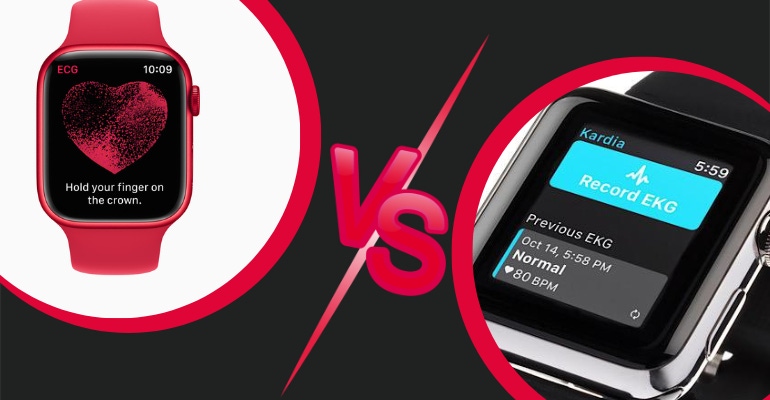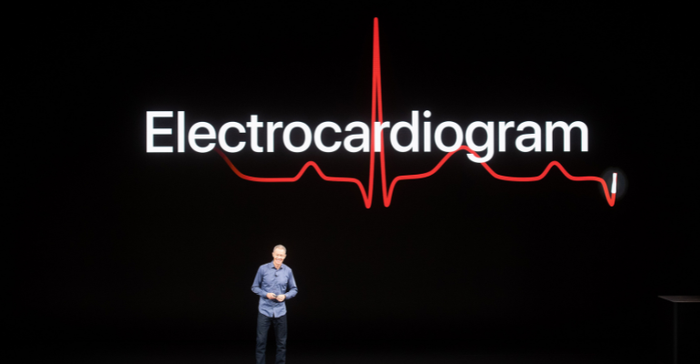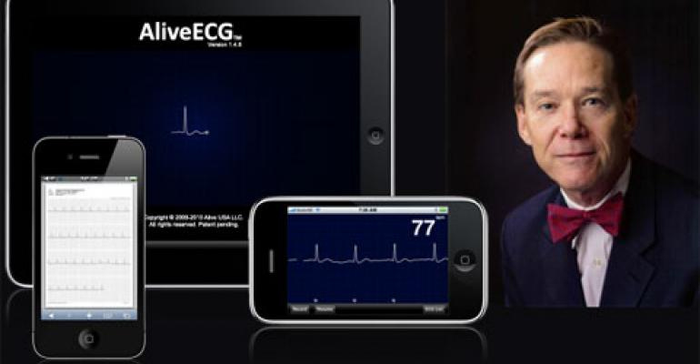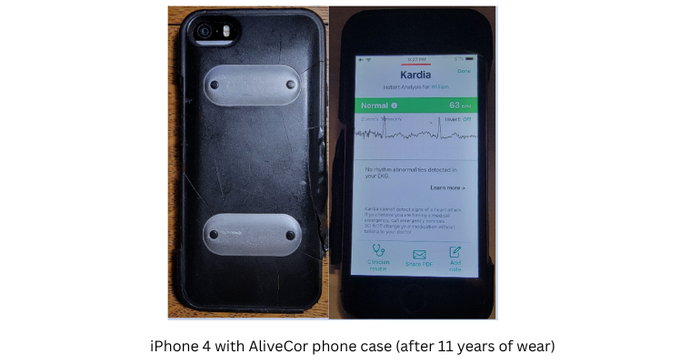A medtech expert reflects on the patent battle between Apple and AliveCor, and the blurring lines between consumer health and cleared medical devices.

A David versus Goliath story has been playing out recently between one of the world's largest companies, Apple, and AliveCor, a privately held wearable medical devices company at the other end of the size spectrum. At issue are several patents that AliveCor asserts have been violated by Apple, with recent legal cases resulting in a mixed message.
In its simplest terms the battle is basically an assertion by AliveCor that Apple has infringed on its patents in portable electrocardiogram (ECG) devices through its introduction of built-in ECG technology in its Apple Watch ranging from the series 4 up to the recent series 8.
In December 2022 the International Trade Commission ruled in favor of AliveCor, stating that Apple did indeed infringe on the patents, potentially leading to an import ban on those watches with the built-in ECG technology.
However, also in December, the U.S. Patent and Trademark Office ruled that all three of AliveCor’s challenged claims were unpatentable because a person “of ordinary skill in the art” of cardiac monitoring technologies could arrive at the same inventions. At this point it is essentially a draw, with both sides suggesting that they will prevail as the legal battles continue.

Above: Apple COO Jeff Williams discusses Apple Watch series 4 during an event on Sept. 12, 2018, in Cupertino, CA.
'New devices that promised to change the dynamics in the personal monitoring space were of great interest'
As this unfolds in the courts, it is worth a bit of a trip down memory lane as I was first introduced to AliveCor and its revolutionary device in about 2012 and was an early adopter. During my previous stint as VP of Product Development at Nonin Medical, we had introduced the first Continua-cleared Bluetooth fingertip pulse oximeter in late 2010, so new medical devices that promised to change the dynamics in the personal monitoring space were of great interest. I met Dave Albert, MD, founder of AliveCor (pictured below), at Leslie Saxon, MDs', Body Computing Conference at the University of Southern California in 2012. Saxon’s conference is a unique blend of technology, medicine, and business focused on the intersection of these areas with human beings. At this conference, attendees who signed up could receive the AliveCor device, essentially a phone cover with embedded electronics and electrodes that would provide a single lead ECG.

I had previously tested one of the AliveCor devices, looking at one of the more interesting non-medical features, the “wireless” connectivity which was an acoustic coupling to the microphone of the phone, not the ubiquitous Bluetooth radio connectivity so prevalent today. That scheme, plus the ability to have a medical grade ECG in the palm of my hand, was a very interesting advance in the evolution of portable, if not quite wearable, legitimate medical devices. It also put AliveCor on the path of becoming one of the pioneers of wearable medical devices.
Since the early part of the last decade there has been a rapid proliferation of “digital health” devices, ranging from relatively simplistic fitness devices with accelerometers and gyros inside to full blown wearable medical devices. Together with the growth of specific hardware, the advent of the cell phone or mobile computer that we all carry around today make possible measurements that traditionally took place in clinics or hospitals. The number of such hardware and software apps, however, comes with the challenge of selecting the appropriate device or app for your specific needs, whether it falls into the category of wearable medical devices or not.
In December 2012 the AliveCor product was initially cleared by FDA as intended for use by licensed medical professionals to record, display, store, transfer, and evaluate single-channel electrocardiogram (ECG) rhythms. Form factors for the AliveCor product have evolved from phone case to standalone devices. In fact, in March 2016 AliveCor announced the introduction of the first medical-grade EKG band for the Apple Watch, Kardia Band, along with a new app for smartphones, both intended to bring heart monitoring capability to a broader audience. Today, a wide range of wearable medical devices offer ECG capabilities as well as other vital signs measuring capabilities.
With hundreds of thousands of software apps in the various app stores and a variety of hardware platforms ranging from watches to patches to other device form factors, how does someone choose from all these devices and apps? Primarily it comes down to what do you want to do with it. In medical terms, it is defining “the intended use” for the product. According to section 201(h) of the Federal Food, Drug, and Cosmetic Act, a medical device is “any instrument, machine, contrivance, implant, in vitro reagent that's intended to treat, cure, prevent, mitigate, diagnose disease in man.” According to the International Medical Device Regulators Forum software can be considered as a medical device if it is “intended to be used for one or more purposes that perform these purposes without being part of a hardware medical device." So, a standalone software app can be a medical device as well and regulated as one.
With intended use as a guideline, what other attributes can help us decide which devices and apps are useful? In the world of big data, four attributes coined by IBM are called the “four V’s” and are volume, velocity, variety, and veracity. I like to add a fifth "V" to the mix, “value.” For the purposes of this discussion, however, the key "V" is “veracity,” or truth. This term is at the core of medical device development. Can you trust the data to be accurate, reliable, and repeatable? Does the device do what it says it will? While absolute numbers are not always needed and relative measurements can be useful, it is important that the measurements then be at least repeatable. For example, while certain conditions may require exact body weight, a relative measurement showing a rapid weight gain can be an important indicator of potential cardiac issues. However, you must be able to count on the information to be repeatable to be of any value.
To some extent, it is also buyer beware. In 2016 a class-action lawsuit was filed against Fitbit over the accuracy of the heart rate function, alleging that it under-reported heart rate, potentially putting users at risk. Additional lawsuits have been filed since with similar allegations. Fitbit counters the allegations but also notes that, “It’s also important to note that Fitbit trackers are designed to provide meaningful data to our users to help them reach their health and fitness goals, and are not intended to be scientific or [wearable medical devices]."
This example highlights the challenges in evaluating and using the wide range of devices. In addition to ECG, many of the common watch-format wearable medical devices also incorporate pulse oximeter capabilities. They may work well on a healthy person when worn properly while sitting still, but they are not as accurate as dedicated and cleared medical devices designed to work over the extreme conditions of wearability, skin tone, motion tolerance, low perfusion, etc., typically a challenging environment for those very people who need the information most.
Intended use matters in wearable medical devices

So, while the legal battle over patents between AliveCor and Apple continues through the courts, the less obvious issue in this discussion goes to the heart of the digital health debate over which device to use. In the blurring of the lines between consumer health and cleared wearable medical devices, it is important to consider the intended use of the device or app and whether it meets your specific needs.
It is instructive to note one of the limitations of the ECG capability as listed in Apple’s de novo application to FDA on August 14, 2018: "The clinical study did not quantitatively assess the quality of the ECG waveform produced by the ECG App. The ECG produced by the ECG App is not intended for clinical use or as the basis for diagnosis or treatment. The ECG waveform is only intended for informational use."
In other words, don’t use this device for medical purposes, a safe disclaimer for this device, assuming that we all read the fine print. In a world with a number of devices and apps from which to choose, make sure you understand what you want from the device and that it has been verified and validated to provide that capability.
Many non-medical devices serve valuable purposes, providing useful insight into behaviors that may lead to better health. I finally added a fancy smart watch to my possessions this past holiday season and I enjoy the casual insight into my physical parameters as well as the link to my text messages and alerts. However, I know that if I’m really interested in my blood oxygen level during Covid or my heart rate during an erratic episode, I can pull out my Nonin pulse oximeter or my 11-year-old AliveCor device (pictured below) and get medically relevant readings.

William "Bill" Betten is director of solutions – medtech at S3 Connected Health and has decades of experience working with medical devices.
About the Author(s)
You May Also Like


